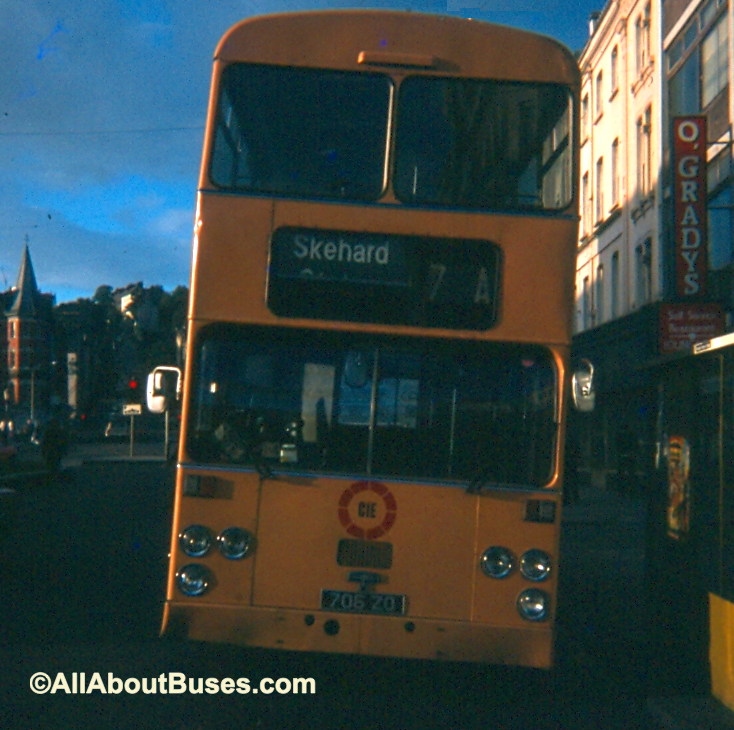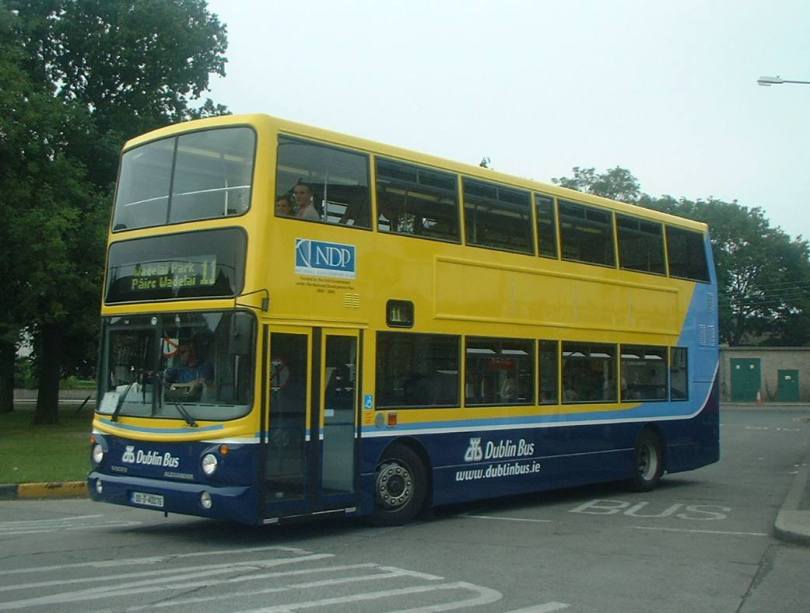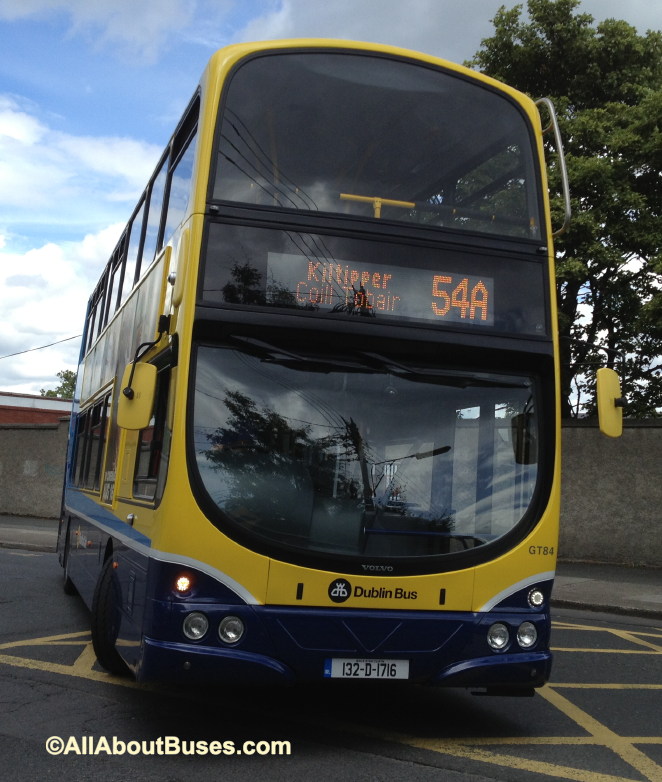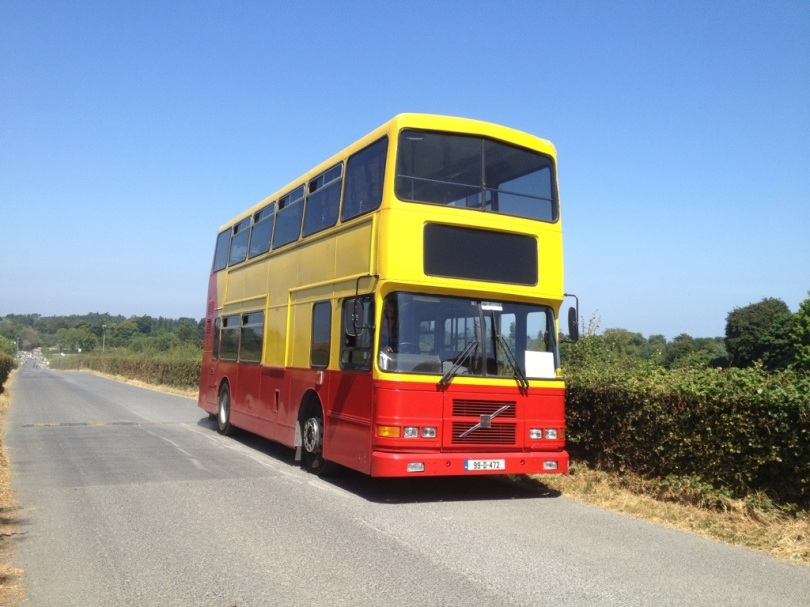AllAboutBuses invites you to banish the Monday morning back-to-work blues with a spot of time travel . .
This week we jump back in time to 1979 in Dublin.
Heineken had a very eye-catching and cleverly designed advertising campaign running on CIE buses at the end of the 1970s – wrapped around the destination display of double-deckers with the strapline “Destination: Refreshment”
The bus displaying it here is D826, one of the final batch of VanHool MacArdle bodied Leyland Atlantean AN68s delivered to CIE in 1977/78, following a gap in production as the Spa Road plant built double-deckers for South Yorkshire and A1 Motor Services.
These last Dublin-built buses differed from the earlier VanHools in having a revised lower frontal section made of fibreglass, and also originally sported the more modern square VanHool badge. Over the years they gradually lost these features, and ended up identical to the bulk of the VanHool fleet, which had been delivered between 1974 and 1976.
D826 is seen here heading inbound on the south quays (in the days before the traffic flow was reversed) and with a hopelessly mis-set destination display, the top blind being halfway between the outbound route 25 and 37 displays, and the lower displaying “via City Centre” which would be more commonly used on cross city routes – “via Chapelizod” would have been more appropriate for the 25.























